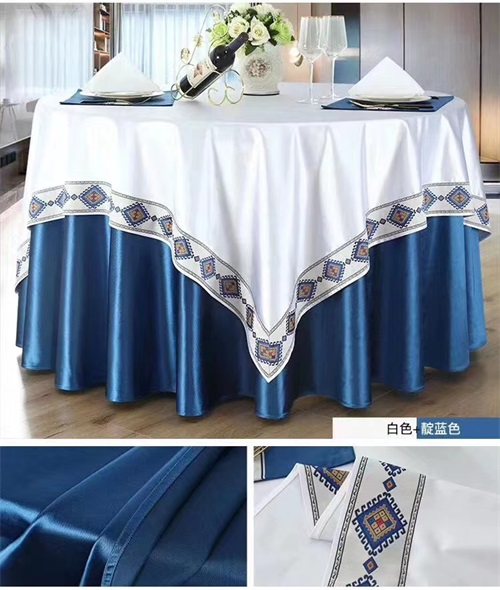<blockquote id="vf288"></blockquote>
酒店布草洗滌后發(fā)黑發(fā)青是怎么回事?
時(shí)間:2024-03-22 來(lái)源:http://www.xcnmpx.com/
01洗滌用水的水質(zhì)好壞會(huì)影響布草泛灰發(fā)黃
The quality of washing water can affect the graying and yellowing of linen
因?yàn)閺乃蜃詠?lái)水中直接提取的水會(huì)攜帶大量的黃泥或微細(xì)沙塵。這些含有泥沙未經(jīng)過(guò)濾的水進(jìn)入水洗機(jī)后,會(huì)對(duì)布草造成比較嚴(yán)重的污染,形成視覺上的發(fā)灰發(fā)黃發(fā)黑。由于水中含有的無(wú)機(jī)鹽離子會(huì)對(duì)織物水洗效果構(gòu)成威脅,水中的鈣、鎂等離子,在洗加溫條件下,由可溶性的碳酸氫鈣、碳酸氫鎂轉(zhuǎn)變成不溶于水的碳酸鈣和碳酸鎂,它們沉積在織物上以后,會(huì)使水洗后的織物泛灰發(fā)黃。
Because water extracted directly from wells or tap water can carry a large amount of yellow mud or fine sand and dust. After these unfiltered water containing sediment enter the washing machine, it will cause serious pollution to the linen, forming a visual graying, yellowing, and blackening. Due to the presence of inorganic salt ions in water, it poses a threat to the washing effect of fabrics. Calcium and magnesium ions in water, under washing and heating conditions, transform from soluble calcium bicarbonate and magnesium bicarbonate to insoluble calcium carbonate and magnesium carbonate. After they deposit on the fabric, it will cause the washed fabric to turn gray and yellow.
同樣以溶解狀態(tài)存在水中的亞鐵離子,在主洗加溫及堿性條件下,也會(huì)以帶紅褐色的鐵化合物沉積在織物上,從而使洗后的織物泛黃發(fā)紅甚至呈淺褐色,還有硬水中的無(wú)機(jī)鹽離子與肥皂等陰離子洗滌劑生成,不僅浪費(fèi)了洗滌材料,降低了洗滌劑的去污效率,而且極易黏附在織物上,給織物造成二次污染。織物經(jīng)烘干或熨平之后,不僅常泛灰發(fā)暗,而且去除相當(dāng)困難。
Ferrous ions, also present in a dissolved state in water, can deposit on fabrics as reddish brown iron compounds under main washing heating and alkaline conditions, causing the washed fabric to turn yellow, red, or even light brown. Inorganic salt ions in hard water can also form anionic detergents such as soap, which not only waste washing materials and reduce the cleaning efficiency of detergents, but also easily adhere to fabrics, causing secondary pollution to the fabric. After drying or ironing, the fabric often turns gray and dark, and it is also quite difficult to remove.
目前一般是通過(guò)在管道或蓄水池前端安裝過(guò)濾設(shè)備用以凈化水源,提高洗滌用水的干凈度,以此來(lái)避免水質(zhì)問(wèn)題對(duì)布草洗滌質(zhì)量的影響。
At present, filtration equipment is generally installed at the front end of pipelines or reservoirs to purify the water source and improve the cleanliness of washing water, in order to avoid the impact of water quality issues on the quality of linen washing.

02洗滌劑的用量、用法不對(duì)
The dosage and usage of 02 detergent are incorrect
酒店布草
Hotel linen
氯漂白劑是布草織物水洗時(shí)常用的洗滌材料。在適宜的溫度及PH值條件下,氯漂白劑不僅可以去除布草織物上常用洗滌劑不能洗掉的色漬色底,增加織物白度,還能起到一定的抗菌消毒作用,但是氯漂白劑的添加量應(yīng)適中。若添加量過(guò)多,或者氯漂白劑在洗滌液中分布不均勻,不但會(huì)造成織物洗后發(fā)黃,嚴(yán)重時(shí)還可能造成織物破損。
Chlorine bleach is a commonly used washing material for fabric washing. Under suitable temperature and pH conditions, chlorine bleach can not only remove color stains and bottoms on linen fabrics that cannot be washed away by commonly used detergents, increase fabric whiteness, but also have a certain antibacterial and disinfection effect. However, the amount of chlorine bleach added should be moderate. If the amount added is too much, or if chlorine bleach is unevenly distributed in the washing solution, it can not only cause the fabric to turn yellow after washing, but in severe cases, it may also cause fabric damage.
此外,長(zhǎng)期使用含有熒光增白劑的洗衣粉織物,或者洗滌操作時(shí)熒光增白劑以及柔軟劑添加過(guò)量,也會(huì)造成這些材料在布草織物上的沉積,再經(jīng)烘干或高溫熨燙,從而造成織物泛黃發(fā)暗發(fā)黑。
In addition, long-term use of laundry detergent fabrics containing fluorescent whitening agents, or excessive addition of fluorescent whitening agents and softeners during washing operations, can also cause the deposition of these materials on the fabric. After drying or high-temperature ironing, the fabric can turn yellow, dark, and black.
03操作工藝會(huì)導(dǎo)致布草泛灰發(fā)黃發(fā)黑
03 Operation process will cause the linen to turn gray, yellow, and black
織物經(jīng)洗和漂白后,一般均經(jīng)過(guò)中速或高速脫水過(guò)程,以盡可能降低水洗織物中殘存的洗滌液。由于殘存在織物纖維中的洗衣液既含有堿性的洗滌劑,又含有織物上脫落下來(lái)的污垢。為了獲得佳的洗滌效果,還需要一定量的水來(lái)稀釋織物中的洗滌液,并通過(guò)洗衣機(jī)的物理作用,使織物中的洗滌劑和沉積的織物上的污垢進(jìn)一步擴(kuò)散到清水中。
After washing and bleaching, the fabric generally undergoes a medium or high-speed dehydration process to minimize the residual detergent in the washed fabric. Due to the fact that the laundry detergent remaining in the fabric fibers contains both alkaline detergents and dirt that has fallen off the fabric. In order to achieve better washing results, a certain amount of water is needed to dilute the washing solution in the fabric, and through the physical action of the washing machine, the detergent in the fabric and the dirt deposited on the fabric are further diffused into clean water.
這即是水洗織物投水漂白的目的,為了加速織物中殘存洗滌液的的擴(kuò)散作用,盡量稀釋織物中殘存的洗滌液,水洗織物投水時(shí)常選用高水位,并進(jìn)行多次,以逐漸降低織物上殘存洗滌液的濃度。為便于洗滌液從織物纖維中擴(kuò)散出來(lái),使織物纖維持續(xù)保持溶脹狀態(tài),投水時(shí)的水溫還保持梯度下降,這些操作雖屬經(jīng)驗(yàn)之談,但操作不當(dāng),致使洗滌液中的污垢重新沉積到布草織物上,勢(shì)必會(huì)造成水洗后的布草織物泛灰發(fā)黃。
This is the purpose of adding water to bleach washed fabrics. In order to accelerate the diffusion of residual detergent in the fabric and dilute the residual detergent as much as possible, high water levels are often used for adding water to washed fabrics, and multiple times are carried out to gradually reduce the concentration of residual detergent on the fabric. In order to facilitate the diffusion of detergent from the fabric fibers and maintain a continuous swelling state of the fabric fibers, the water temperature during water addition also maintains a gradient decrease. Although these operations are empirical, improper operation can cause the dirt in the detergent to re deposit on the fabric, which will inevitably cause the washed fabric to turn gray and yellow.
資訊推薦Information
聯(lián)系我們Information
